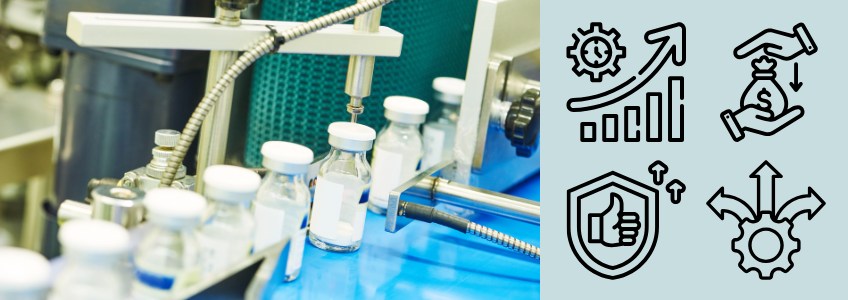
Introduction
In the highly regulated and competitive pharmaceutical industry, efficiency is paramount. From raw material sourcing to final product distribution, every step of the manufacturing process demands meticulous attention to detail and a relentless pursuit of optimization. One powerful tool that can significantly enhance production efficiency is ‘Single Minute Exchange of Die’ (SMED).
What is SMED?
SMED is a lean manufacturing methodology developed by Shigeo Shingo, a renowned industrial engineer. It focuses on drastically reducing the time required for equipment changeovers between production runs. In the pharmaceutical context, this translates to minimizing the time taken to switch between manufacturing different drug formulations, dosages, or batches.
Why is SMED Crucial in the Pharmaceutical Industry?

- Increased Production Capacity: Shorter changeover times allow for more frequent production runs of smaller batches, leading to increased overall output.
- Reduced Inventory Costs: Smaller batch sizes minimize the risk of product obsolescence and reduce the amount of inventory held, thereby lowering storage and handling costs.
- Improved Flexibility: Faster changeovers enable manufacturers to quickly adapt to changing market demands and respond effectively to urgent orders.
- Enhanced Quality: Minimizing downtime reduces the potential for human error and equipment malfunction, leading to improved product quality and consistency.
- Cost Savings: By reducing waste, minimizing downtime, and increasing efficiency, SMED contributes significantly to lower production costs.
Implementing SMED in Pharmaceutical Manufacturing
The successful implementation of SMED in pharmaceutical manufacturing requires a systematic and collaborative approach.

1. Identify Changeover Steps
A thorough analysis of the current changeover process is crucial. This involves breaking down the process into individual steps and identifying those that consume the most time.
2. Separate Internal and External Activities
Internal Activities: The activities that can only be performed while the equipment is not running are called internal activities (e.g., cleaning, adjusting settings).
External Activities: Whereas external activities can be performed while the equipment is still running (e.g., preparing tools and materials, pre-setting equipment).
3. Convert Internal to External Activities
The key to significantly reducing changeover times lies in converting as many internal activities as possible to external activities. This requires creative problem-solving and a deep understanding of the production process.
4. Streamline and Standardize
Once the changeover process has been optimized, it is essential to develop and implement standard operating procedures (SOPs) to ensure consistency and repeatability.
5. Continuous Improvement
SMED is an ongoing process. Regular reviews and data analysis are necessary to identify areas for further improvement and maintain the gains achieved.
Examples of SMED Implementation in the Pharmaceutical Industry
1. Tablet Press Changeovers
- Before SMED: Cleaning and retooling a tablet press could take several hours.
- After SMED: Changeover times can be reduced to minutes by pre-setting tools, implementing quick-release mechanisms, and optimizing cleaning procedures.
2. Aseptic Filling Line Changeovers
- Before SMED: Changeovers in aseptic filling lines can be particularly challenging due to the stringent sterility requirements.
- After SMED: Again, changeover times can be significantly reduced by pre-sterilizing components, utilizing single-use technologies, and implementing automated cleaning systems.
Conclusion
SMED is a powerful tool that can revolutionize pharmaceutical manufacturing by enhancing efficiency, reducing costs, and improving product quality. Therefore, pharmaceutical companies can gain a competitive edge in the global market by embracing this lean methodology, better serve their customers, and ultimately improve patient outcomes.
If you are interested to achieve similar success stories, write to us!
